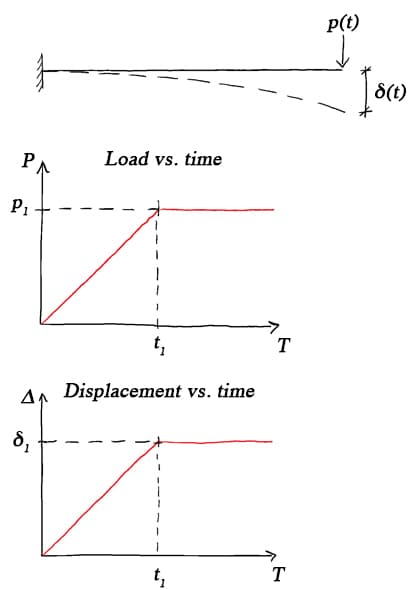Most of the loads we encounter in general day-to-day civil engineering can be considered static loads. A static load has two important characteristics that distinguish it from a dynamic load:
-
The magnitude of a static load typically does not vary with time and if it does, the rate of change of load magnitude is small.
-
Related to the first point, for a load to be considered static, it must be applied slowly, in other words, the rate of change in magnitude must be small. We'll discuss this in more detail in the following lectures.
If an applied load qualifies and can be considered a static load, we can expect a static structural response. This means that for a given load magnitude, we observe a single structural response (deflection). The deflection of the structure will be governed by the load magnitude, and the stiffness of the structure , according to the standard relationship,
We can illustrate the basic idea of static loading and response by considering the beam below subject to an external force , Fig 1.

Fig 1. Cantilever beam subject to a static load applied slowly, loading history, displacement history (top to bottom).
From above we can see that the displacement history is simply a scaled version of the loading history, with the constant of proportionality (scale factor) being the structural stiffness. Even if the force magnitude does vary with time, provided that the rate of change in magnitude is sufficiently small, we will still observe a static response; i.e. the resulting displacement history will be linearly proportional to the applied load according to the relationship . Things become more interesting when we apply the load quickly, we'll explore this in the next lecture.